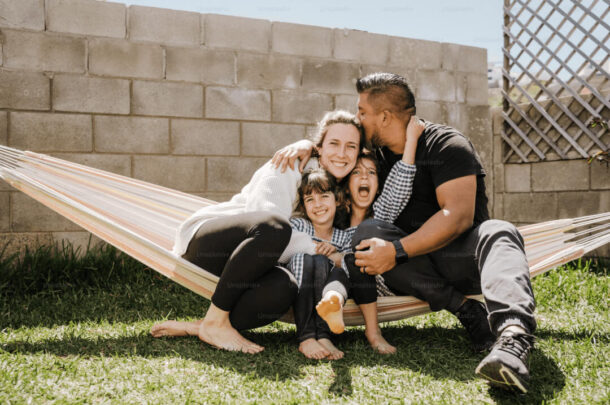Introduction
Imagine the sparkle in your child’s eyes as they unwrap a toy that lights up their world—whether it’s a newborn grasping a soft rattle, a toddler stacking colorful blocks, or a teen tinkering with a coding kit. As a parent, choosing the right toy feels like a superpower: you’re not just picking a plaything, you’re unlocking your child’s imagination, creativity, and growth. But with shelves overflowing and online carts tempting, how do you find the best toys that match your child’s age, spark joy, and nurture their development?
Toys are more than fun—they’re tools for learning, bonding, and building skills, from motor coordination in babies to problem-solving in teens. This ultimate guide, crafted for parents like you, delves deep into the best toys for kids across all ages: newborns (0–1), toddlers (1–3), preschoolers (4–5), school-age kids (6–12), and teens (13–18). With heartfelt stories, expert insights, practical tips, and parent-tested product recommendations, we’ll help you pick toys that delight and inspire. Let’s find the perfect playtime treasures for your child!
Why Choosing the Right Toys Matters
Toys shape how kids explore, learn, and connect with the world. A 2024 study in Child Development found that age-appropriate toys enhance cognitive skills, emotional regulation, and social abilities, with effects lasting into adulthood. The right toy can turn a fussy toddler into a focused builder or a shy teen into a confident creator. But the wrong one? It might gather dust or overwhelm your child.
Take Sarah, a mom from Denver with a 4-year-old and a 13-year-old. “I used to grab flashy toys, but they’d lose interest fast,” she said. “Now I choose toys that match their stages—like blocks for my preschooler and a drone for my teen. They’re happier, and I’m not wasting money.” Sarah’s story shows how thoughtful toy choices create magic moments for kids and parents alike.
Benefits of Great Toys
- Skill Building: Toys foster motor, cognitive, and social growth.
- Joyful Learning: Play turns lessons into fun adventures.
- Family Bonds: Shared play deepens your connection with your child.
Age-Specific Toy Guide: Picks for Every Stage
Every child’s stage brings unique needs and wonders, so we’ll explore the best toys for each age group—newborns, toddlers, preschoolers, school-age kids, and teens—in detail, ensuring you have clear, practical recommendations to spark playtime joy.
Newborns (0–1): Sensory Sparks for Tiny Explorers
Newborns are just beginning to discover the world, captivated by sounds, textures, and gentle movements. Toys for this age should stimulate their senses, encourage grasping, and promote bonding, all while being safe and soothing.
Why These Toys Work
- Sensory Stimulation: Bright colors and sounds boost brain development, per Pediatric Research (2024).
- Motor Skills: Grasping toys strengthens tiny hands.
- Comfort: Soft toys provide security during cuddles.
Top Toy Picks
- Manhattan Toy Winkel Rattle & Teether : This colorful, maze-like rattle captivates newborns with its soft, chewable loops and gentle rattle sound. It’s perfect for grasping and teething, promoting sensory and motor growth. My friend’s 3-month-old can’t get enough of it. Check it out here—it’s a newborn must-have.
Why It’s Great: BPA-free, lightweight, and easy to hold. - Sassy Tummy Time Floor Mirror: A soft, baby-safe mirror encourages tummy time, strengthening neck muscles and sparking self-discovery. The high-contrast patterns grab attention, per American Academy of Pediatrics recommendations. See it here—it’s a tummy-time game-changer.
Why It’s Great: Folds for travel, includes crinkle textures. - Lamaze Freddie The Firefly: This plush toy dangles with crinkly wings, a teether, and a mirror, perfect for crib or stroller play. It stimulates the senses and soothes fussiness. Check it out here—it’s a parent favorite.
Why It’s Great: Clips easily to car seats or bags.
Tips for Choosing
- Safety First: Ensure toys are non-toxic, with no small parts.
- Keep It Simple: Avoid overstimulation with too many sounds or lights.
- Engage Together: Shake a rattle during cuddles to bond.
Case Study: Mia’s Sensory Start
Laura, a new mom from Phoenix, struggled to engage her 4-month-old, Mia. “She’d cry during tummy time,” Laura said. They got a Sassy Tummy Time Mirror and Manhattan Winkel Rattle, which Mia loved instantly. See them here and here. “Mia giggles at her reflection now, and we’re closer than ever,” Laura shared. Mia’s playtime blossomed.
Toddlers (1–3): Building Blocks of Imagination
Toddlers are whirlwinds of energy, learning to stack, sort, and explore with boundless curiosity. Toys for this age should encourage fine motor skills, problem-solving, and creative play while being durable enough for rough-and-tumble fun.
Why These Toys Work
- Motor Development: Stacking and pushing toys build coordination, per Early Childhood Research Quarterly (2024).
- Imagination: Open-ended toys spark storytelling and creativity.
- Social Skills: Interactive toys teach sharing and turn-taking.
Top Toy Picks
- Mega Bloks First Builders Big Building Bag: These chunky, colorful blocks are perfect for stacking, building, and knocking down, fostering creativity and motor skills. My neighbor’s 2-year-old builds towers daily. Check it out here—it’s a toddler classic.
Why It’s Great: Includes 80 pieces, easy to clean. - VTech Sit-to-Stand Learning Walker: This walker doubles as an activity center with music, shapes, and buttons, helping toddlers transition from sitting to walking. See it here—it’s a developmental win.
Why It’s Great: Adjustable speed, engaging sounds. - Melissa & Doug Wooden Shape Sorter: A sturdy sorter with colorful shapes teaches problem-solving and hand-eye coordination. Check it out here—it’s a learning gem.
Why It’s Great: Durable, promotes independent play.
Tips for Choosing
- Durability: Pick toys that withstand throws and drops.
- Open-Ended Play: Choose toys like blocks for endless creativity.
- Join In: Build with your toddler to boost bonding.
Case Study: Ethan’s Building Boom
Mike, a dad from Chicago, noticed his 18-month-old, Ethan, was restless. “He’d toss toys and lose interest,” Mike said. They got Mega Blocks and a Melissa & Doug Shape Sorter, which Ethan adored. See them here and here. “Ethan builds castles now and focuses longer—it’s amazing,” Mike shared. Ethan’s playtime soared.
Preschoolers (4–5): Creative Minds in Bloom
Preschoolers are bursting with imagination, ready for toys that fuel storytelling, early learning, and social play. Toys at this age should spark creativity, teach basic concepts (e.g., letters, and numbers), and encourage cooperation.
Why These Toys Work
- Cognitive Growth: Puzzles and games teach problem-solving, per Journal of Play (2024).
- Social Skills: Role-play toys foster empathy and teamwork.
- Creativity: Art and building toys unlock self-expression.
Top Toy Picks
- LEGO DUPLO My First Number Train: These oversized LEGO bricks form a train that teaches counting and colors, blending building with learning. My friend’s 4-year-old loves it. Check it out here—it’s a preschool hit.
Why It’s Great: Safe for small hands, encourages storytelling. - Melissa & Doug Wooden Food Truck Play Set: A pretend food truck with accessories sparks role-play, teaching social and math skills. See it here—it’s a playtime star.
Why It’s Great: Durable, promotes cooperative play. - Crayola Inspiration Art Case: This portable art kit with crayons, markers, and paper fuels creativity and fine motor skills. Check it out here—it’s an art lover’s dream.
Why It’s Great: Organized, mess-free storage.
Tips for Choosing
- Learning Focus: Pick toys that teach skills like counting or sharing.
- Encourage Role-Play: Pretend sets build empathy and language.
- Play Together: Join their “restaurant” to bond.
Case Study: Sophie’s Play Kitchen
Emma, a mom from Seattle, wanted to engage her 5-year-old, Sophie. “She loved pretend play but got bored fast,” Emma said. They got a Melissa & Doug Food Truck and Crayola Art Case, which Sophie used daily. See them here and here. “Sophie runs her ‘café’ and draws menus—she’s so creative,” Emma shared. Sophie’s imagination thrived.
School-Age Kids (6–12): Adventurers and Thinkers
School-age kids are curious and capable, craving toys that challenge their minds, spark adventure, and let them create. Toys should encourage critical thinking, physical activity, and independence.
Why These Toys Work
- Problem-Solving: STEM toys build logic, per Educational Psychology Review (2024).
- Physical Play: Active toys promote health and coordination.
- Independence: Kits encourage solo exploration with guidance.
Top Toy Picks
- Klutz LEGO Chain Reactions Craft Kit: This kit lets kids build moving LEGO machines, teaching physics and engineering through play. My neighbor’s 9-year-old is obsessed. Check it out here—it’s a STEM gem.
Why It’s Great: Includes instructions, and fosters creativity. - Razor A Kick Scooter: A sturdy scooter encourages outdoor play, building balance and confidence. See it here—it’s an active win.
Why It’s Great: Foldable, adjustable height. - ThinkFun Gravity Maze Game: A logic game with marbles and towers that sharpens problem-solving skills. Check it out here—it’s a brain teaser.
Why It’s Great: Multiple challenge levels, solo or group play.
Tips for Choosing
- Challenge Them: Pick toys that stretch their skills without frustration.
- Outdoor Options: Balance indoor and outdoor play for health.
- Ask Their Input: Let them choose to boost engagement.
Case Study: Liam’s STEM Spark
Rachel, a mom from Miami, saw her 10-year-old, Liam, glued to screens. “He needed a challenge,” she said. They got a Klutz LEGO Chain Reactions Kit and ThinkFun Gravity Maze, which he loved. See them here and here. “Liam builds machines and forgets his tablet—it’s incredible,” Rachel shared. Liam’s curiosity soared.
Teens (13–18): Creative Innovators
Teens are at a crossroads, seeking toys that feel grown-up yet fuel creativity, tech skills, or hobbies. Toys for this age should inspire innovation, independence, and self-expression.
Why These Toys Work
- Skill Building: Coding or art kits prepare teens for future careers, per Journal of Youth Studies (2024).
- Self-Expression: Creative toys boost confidence and identity.
- Engagement: Tech-savvy toys align with their interests.
Top Toy Picks
- Sphero Mini Robot Ball: A programmable robot ball that teaches coding through fun apps, blending tech and play. My friend’s 15-year-old codes tricks with it. Check it out here—it’s a teen tech hit.
Why It’s Great: App-controlled, durable. - Wacom Intuos Drawing Tablet: A compact tablet for digital art, perfect for teens into drawing or design. See it here—it’s a creative win.
Why It’s Great: Compatible with most art software, portable. - Ravensburger 3D Puzzle: Eiffel Tower: A 216-piece 3D puzzle that challenges logic and looks stunning as decor. Check it out here—it’s a teen masterpiece.
Why It’s Great: Engaging, display-worthy.
Tips for Choosing
- Match Interests: Pick toys tied to their hobbies (e.g., tech, art).
- Encourage Independence: Choose kits they can explore solo.
- Balance Tech and Hands-On: Mix digital and physical play.
Case Study: Ava’s Coding Quest
Lisa, a mom from Chicago, wanted to inspire her 14-year-old, Ava. “She loved tech but felt bored,” Lisa said. They got a Sphero Mini Robot and Wacom Drawing Tablet, which Ava used to code and draw. See them here and here. “Ava’s creating apps and art—she’s unstoppable,” Lisa shared. Ava’s creativity took flight.
Practical Tips for Choosing Toys for Kids
- Check Safety: Ensure toys meet ASTM or CPSC standards, especially for younger kids.
- Read Reviews: Use Amazon or parenting blogs to vet quality and durability.
- Consider Longevity: Pick toys that grow with your child (e.g., LEGO sets).
- Budget Wisely: Set a spending cap and prioritize versatile toys.
- Store Smart: Use a Simple Houseware Toy Organizer to keep toys tidy. Check it out here—it’s a clutter buster.
Overcoming Common Toy-Buying Challenges
- Overwhelm from Choices: Focus on age-specific needs and trusted brands like Melissa & Doug or LEGO. Use a Consumer Reports Toy Guide for clarity.
- Toys Losing Appeal: Rotate toys weekly to keep them fresh. A Melissa & Doug Storage Bin helps. See it here.
- Screen Time Competition: Pick interactive toys like Sphero Mini to rival devices. Check it out here.
- Messy Play Areas: Use a Simple Houseware Organizer for quick cleanup. See it here.
- Budget Strains: Shop sales or bundles, like Crayola Art Case. Check it out here.
Tips for Toy Success
- Observe Play: Watch what excites your child to guide future buys.
- Rotate Toys: Refresh interest by swapping toys monthly.
- Gift Smart: Use birthdays to add high-value toys like LEGO DUPLO. See it here.
- Join Playtime: Bond by playing together, boosting toy value.
- Share Finds: Swap toy tips in parent groups or on ParentMosaic.com.
Why Invest in the Right Toys?
Choosing the best toys is like planting seeds for your child’s future. Each rattle, block, or robot kit nurtures their mind, hearts, and dreams, turning playtime into a launchpad for growth. You’re not just a parent—you’re a guide, sparking joy and wonder with every toy you pick.
The Big Win
- Skill Power: Toys build brains and bodies for life.
- Happy Moments: Play creates memories you’ll cherish.
- Parent Pride: You’re shaping a bright, curious kid.
Conclusion: Spark Joy with the Perfect Toy
Your child’s next toy is more than a gift—it’s a key to their world, unlocking laughter, learning, and love. Whether it’s a rattle for your newborn, a puzzle for your preschooler, or a coding kit for your teen, you’re crafting moments that shine. So, dive into playtime, pick those treasures, and watch your child’s imagination soar.
Share your favorite toy picks with the ParentMosaic community. Let’s create a mosaic of joyful play, one toy at a time!




